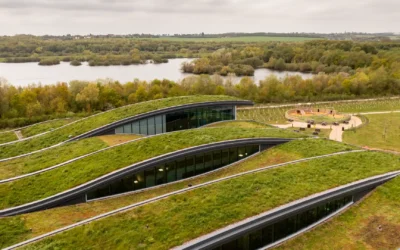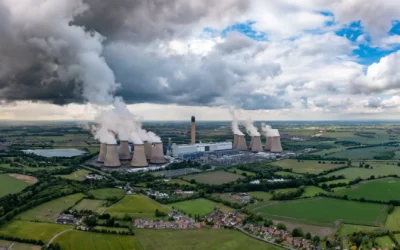• India is the world’s second biggest bus market after China, with approximately 90,000-100,000 units sold per annum. However, more than 95% of these units are diesel-powered.
• India can have a significant penetration of electric buses to satisfy the demands of expanding urban centers with government incentives and policy support, increased charging infrastructure, and improvements in battery technology.
• To optimize ridership and emissions gains, future reforms will need to establish a new ecosystem for e-buses that has implications for strategies of procurement, deployment, service conditions, charging alternatives, skilling, and the monitoring of service levels.
The decarbonization of urban transportation and the reduction of hazardous exposure in India’s polluted cities are the two major benefits of electrifying the bus segment. India is the world’s second biggest bus market after China, with approximately 90,000-100,000 units sold per annum. However, more than 95% of these units are diesel-powered. As governments around the world push for E-mobility, India is also making a concerted push for faster adoption of electric buses. A staggering 74,000 preventable deaths in India were estimated, in a study by the International Council on Clean Transportation (ICCT), to be completely due to tailpipe pollution in 2015. High levels of greenhouse gas (GHG) emissions are also attributed to the transportation industry. GHG emissions from the transportation sector increased at a rapid compound annual rate of 7.4% between 2005 and 2015. Rapid motorization, wherein India’s motor vehicle fleet doubles every eight to ten years, is predicted to make this situation worse. To resolve these problems, it’s essential to electrify India’s bus fleet.
The Increasing Demand for Electric Buses
The demand for electric buses from the state and central governments will increase significantly, along with the increase in private sector adoption, enabling the Indian electric bus industry to grow at a quick rate to become ten times its current size in the next five years. India can have a significant penetration of electric buses to satisfy the demands of expanding urban centers with government incentives and policy support, increased charging infrastructure, and improvements in battery technology.
Electric vehicles are made up of battery-electric vehicles (BEV) and plug-in hybrid electric vehicles (PHEV). Battery Electric Vehicles (BEVs) are powered solely by an electric battery, with no gas engine parts. Most BEVs are capable of fast charging. The most commonly used battery for EVs is Lithium-Ion Phosphate (LFP), Nickel Manganese Cobalt (NMC), and Lithium Titanium Oxide (LTO). In terms of battery technology, all OEMs currently rely fully on lithium-ion batteries. It is reported, however, that OEMs use various battery chemistries; for example, Tata Motors uses lithium nickel manganese cobalt (lithium-NMC) whilst Olectra-BYD provides lithium-ion phosphate batteries (LFP). Almost all OEMs use normal conductive charging technology (plug-in battery charging technology) to charge their e-buses. Although everyone claims to have both slow and fast charging as flexible options, the slow charging option is preferred. However, the Plug-in Hybrid Electric Vehicles (PHEV) have an electric powertrain together with a small- to-medium-sized combustion engine, which enables operation in full electric mode, using conventional fuel, or a combination of both.
Figure 1 indicates that, between 2021 and 2030, according to the PTR database, there will be a rise in the number of electric buses in India, with BEV buses outnumbering PHEV buses.

Figure 1: The Number of PHEV and BEV Buses in India in 2021 and 2030
In March 2019, the Indian government formally launched the second phase of the Faster Adoption and Manufacturing of (Hybrid &) Electric Vehicles (FAME) scheme. Furthermore, in August 2019, the government announced plans to procure 5,585 electric buses, to help clean up the environment.
After the issuance of the Expression of Interest (EOI,) the Department of Heavy Industry (DHI) received an overwhelming response from 26 states and Union territories, with a total of 86 proposals for the deployment of 14,588 e-buses, of which the government has sanctioned 5,595 e-buses for 64 cities—5,095 e-buses for intra-city, 400 e-buses for intercity bus operations and 100 e-buses to Delhi Metro Rail Corporation (DMRC) to enhance last-mile connectivity. An estimation provided by DHI shows that, over their lifetime, these buses will operate for 4 Billion km without any tailpipe emissions. This is expected to save approximately 1.2 Billion liters of oil import, resulting in the avoidance of 2.6 Million tCO2 emissions.
Since only 4,500 of the 7,000 buses have been tendered so far, at least 2,500 more vehicles need to be purchased. Each city will eventually have 500 or more e-buses, even if the remaining buses are split among nine cities. 500–600 electric buses, or around 10% of the entire e-bus fleet, are on the way to Delhi and Bengaluru.
State-Level Incentives Driving E-Bus Adoption
Following is a list of some State-level interventions that are primarily targeted towards increasing electric bus adoption in India.
-
- Andhra Pradesh has targeted 100% conversion of its bus fleet to electric in major cities by 2024 and in the entire state by 2029.
-
- Delhi has pledged to convert 50% of all stage carriage buses by 2022.
-
- Kerala has decided to convert their entire bus fleet for more than 6,000 buses by 2025.
-
- Tamil Nadu has decided to procure 1,000 e-buses every year.
-
- Draft EV policy of Madhya Pradesh and Telangana has targeted 100% conversion of their bus fleet by 2028 and 2030, respectively.
-
- The Government of Punjab has signed waivers for private e-bus operator on permit fee and MV tax.
-
- Assam has decided to exempt state GST from e-buses.
-
- The West Bengal state government plans to procure 80 Electric buses via the OPEX model. In the OPEX model, the vendor selected via competitive bidding bears the cost of acquiring, ticketing, and running the vehicle, whereas the lesser (government) pays charges on a per kilometer basis.
Looking Ahead
The majority of people in Indian cities commute via public transportation, particularly buses; therefore, the public transportation-focused e-mobility program is extremely pertinent to India’s decarbonization objective. Electric buses offer a singular opportunity to reduce hazardous exposure and decarbonize a significant portion of daily travel.
Although buses are given priority in the existing incentive programs for electric vehicles, which is understandable, there is still a need for significant improvement in the incentive’s design to ensure its successful deployment. To optimize ridership and emissions gains, future reforms will need to establish a new ecosystem for e-buses that has implications for strategies of procurement, deployment, service conditions, charging alternatives, skilling, and the monitoring of service levels.
State-level electric vehicle policies should include more explicit measures on targets and support for e-buses as the bus market in India expands at a faster rate. Additionally, various regulations are required to address issues from OEMs such as range anxiety, selecting suitable charging technology and limited options, fleet planning and preparing e-bus schedules, performance monitoring of buses, the capacity enhancement of existing staff, etc.
Commercial & Off-Highway Vehicle Service Overview
The research presented in this article is from PTR's Commercial and Off-Highway Vehicle service. For information about this service please submit a request shown below.
Contact Sales:
Europe
+49-89-12250950
Americas
+1 408-604-0522
Japan
+81-80-7808-1378
GCC/Rest of APAC
+971-58-1602441
More about our:
Commercial & Off-Highway Vehicle Market Analysis
Recent Insights
US and EU Strategies in Smart Buildings
Download Service Overview The EU and USA aim to decarbonize their building sectors to meet emission reduction targets. Initiatives like the Home...
COP through the Ages
This infographic takes a cursory glance at the most significant achievements of the Conference of Parties through the years and offers a chance for...
Eyes on the Automobile Sector: Companies with Near-Term Goals of 1.5-degrees
In the wake of burgeoning climate threats, it is becoming ever-important to keep a track of how companies are making progress. Using data from...


